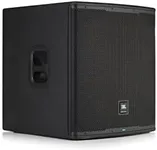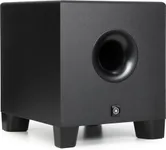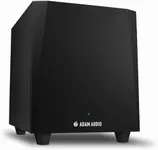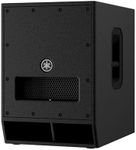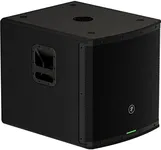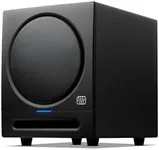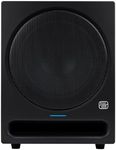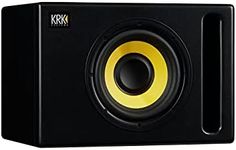Buying Guide for the Best Studio Subwoofers
Choosing the right studio subwoofer is crucial for achieving accurate and balanced sound in your studio. A subwoofer enhances the low-frequency range, providing depth and clarity to your audio. When selecting a subwoofer, consider the size of your studio, the type of music or audio you produce, and your existing audio setup. Understanding the key specifications will help you make an informed decision that best suits your needs.Frequency ResponseFrequency response refers to the range of frequencies a subwoofer can reproduce. This is important because it determines how well the subwoofer can handle low-end sounds. A typical subwoofer frequency response ranges from 20Hz to 200Hz. For studio use, a subwoofer with a lower frequency response (down to 20Hz) is ideal for capturing the deepest bass notes. If you produce bass-heavy music, such as electronic or hip-hop, a wider frequency response is beneficial. For general studio use, a subwoofer with a frequency response down to 30Hz should suffice.
Power OutputPower output, measured in watts, indicates how much power the subwoofer can handle and how loud it can get. This is important for ensuring that the subwoofer can produce clear and powerful bass without distortion. Subwoofers typically range from 100 watts to over 1000 watts. For small to medium-sized studios, a subwoofer with 100-300 watts is usually sufficient. For larger studios or if you need more volume and impact, consider a subwoofer with higher wattage. Your choice should align with the size of your studio and the volume levels you typically work at.
Driver SizeThe driver size refers to the diameter of the subwoofer's speaker cone, usually measured in inches. This affects the subwoofer's ability to move air and produce low frequencies. Common driver sizes range from 8 inches to 15 inches. Smaller drivers (8-10 inches) are suitable for smaller studios and provide tighter, more controlled bass. Larger drivers (12-15 inches) can produce deeper and more powerful bass, making them ideal for larger studios or for genres that require substantial low-end presence. Choose a driver size that matches your studio size and the type of music you produce.
Crossover FrequencyThe crossover frequency is the point at which the subwoofer transitions from handling low frequencies to allowing the main speakers to handle higher frequencies. This is important for achieving a seamless blend between your subwoofer and main speakers. Most subwoofers have adjustable crossover frequencies, typically ranging from 40Hz to 120Hz. For a balanced sound, set the crossover frequency slightly above the lowest frequency your main speakers can handle. If your main speakers can go down to 50Hz, set the subwoofer's crossover around 60-70Hz. Adjusting the crossover frequency helps ensure a smooth and cohesive audio experience.
Room Size and AcousticsThe size and acoustics of your studio play a significant role in how a subwoofer performs. Larger rooms may require more powerful subwoofers to fill the space with adequate bass, while smaller rooms can achieve good results with less powerful units. Additionally, room acoustics, including the presence of sound-absorbing materials and the shape of the room, can affect bass response. Consider using acoustic treatment to manage bass reflections and standing waves. Choose a subwoofer that matches your room size and be prepared to make adjustments to optimize its performance in your specific environment.
